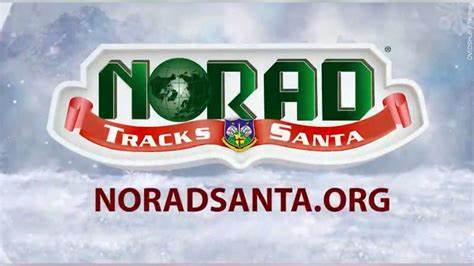
FROM WIKIPEDIA COMMONS
Continental Air Defense Command (CONAD) was a Unified Combatant Command of the United States Department of Defense, tasked with air defense for the Continental United States. It comprised Army, Air Force, and Navy components. It included Army Project Nikemissiles (Ajax and Hercules) anti-aircraft defenses and USAF interceptors (manned aircraft and BOMARC missiles). The primary purpose of continental air defense during the CONAD period was to provide sufficient attack warning of a Soviet bomber air raid to ensure Strategic Air Command could launch a counterattack without being destroyed. CONAD controlled nuclear air defense weapons such as the 10 kiloton W-40 nuclear warhead on the CIM-10B BOMARC. The command was disestablished in 1975, and Aerospace Defense Command became the major U.S. component of North American Air Defense Command (NORAD).

NORAD Tracks Santa is an annual Christmas-themed program in which North American Aerospace Defense Command (NORAD) simulates the tracking of Santa Claus, who is said to leave the North Pole to travel around the world on his mission to deliver presents to children every year on Christmas Eve. The program starts on December 1, but the actual Santa-tracking simulation starts at midnight annually on December 23. It is a community outreach function of NORAD, and has been held annually since 1955.
Although NORAD claims to use radar and other technologies to track Santa, the website merely simulates the tracking of Santa and displays predetermined location information to users.
The program follows the tradition of the September 1897 editorial “Yes, Virginia, there is a Santa Claus” in the New York Sun.
TODAY’S ALMANAC
Question of the Day
What exactly is the “Icelandic low” that weathercasters talk about?
An Icelandic low is a low-pressure center that originates over Iceland and southern Greenland and dominates the wind circulation over the North Atlantic Ocean. In summer, the low weakens and often divides into two separate cells.
Advice of the Day
It is a good practice to leave a few things unsaid.
Home Hint of the Day
Use one-gallon metal paint-thinner cans for storing hardware and other small objects in your workshop. Cut the top off each can with a can opener and pour out any remaining thinner. There’s no need to wash the cans; the last traces of the thinner will evaporate.
Word of the Day
A summer’s-day palindrome: It’s “too hot to hoot.”
Puzzle of the Day
What is lengthened by being cut at both ends?
A ditch
Born
- Kit Carson (frontiersman) – 1809
- Eliza Cook (poet) – 1818
- Charles Wakefield Cadman (composer) – 1881
- Juan Ramon Jimenez (poet) – 1881
- Ava Gardner (actress) – 1922
- Mary Higgins Clark (author) – 1929
- Robert Joffrey (dancer) – 1930
- Ricky Martin (singer) – 1971
- Ryan Seacrest (television host) – 1974
- Pepper (Bolivian gray titi monkey) – 2012
Died
- Peter Lawford (actor) – 1984
- Michael Vale (actor) – 2005
- Cheetah (chimpanzee sidekick in the Tarzan movies of the early 1930s) – 2011
- Charles Durning (actor) – 2012
- Jack Klugman (actor) – 2012
Events
- Treaty of Ghent signed between the U.S. and Great Britain, ending the War of 1812– 1814
- Stille Nacht (Silent Night) first performed, Oberndorf, Austria– 1818
- Clement Moore’s A Visit From St. Nicholas” likely written”– 1822
- The Eggnog Riot began at the U.S. Military Academy at West Point, New York– 1826
- First great fire of San Francisco– 1849
- Two-thirds of the collection of the Library of Congress (35,000 volumes) and a portion of the Capitol were destroyed by fire– 1851
- Canadian-born Reginald A. Fessenden sent the first extended radio broadcast from Brant Rock, Massachusetts– 1906
- O Holy Night was played on the world’s first radio program broadcast, from Brant Rock, Massachusetts– 1906
- Unofficial Christmas truce began in areas of the Western Front during World War I– 1914
- CONAD (later, NORAD) began to track Santa Claus– 1955
- Catcher Jason Varitek was named captain of the Boston Red Sox– 2004
Weather
- Chicago set a record low temperature of -23 degrees F– 1874
- In Fairfield, Montana, the temperature dropped from 63 degrees F at noontime to a chilly 21 degrees below zero F at midnight– 1924
COURTESY www.almanac.com
